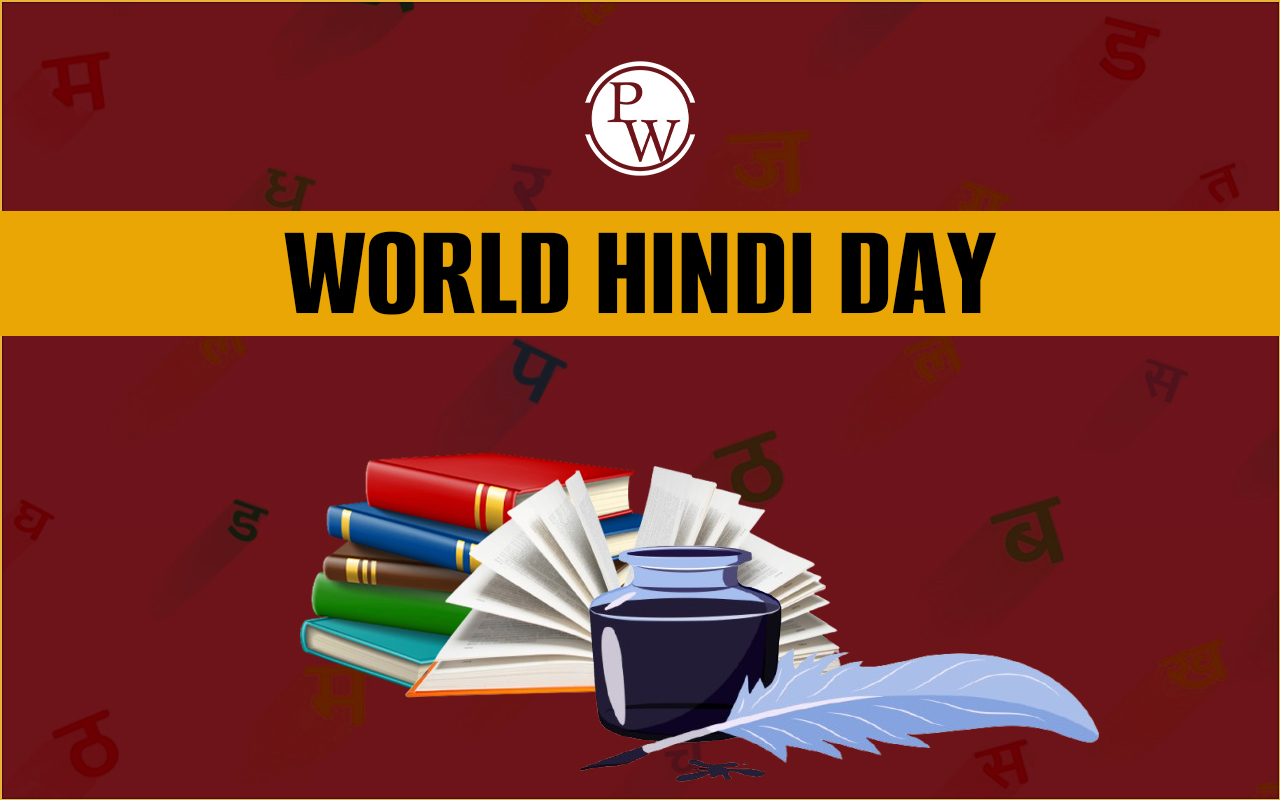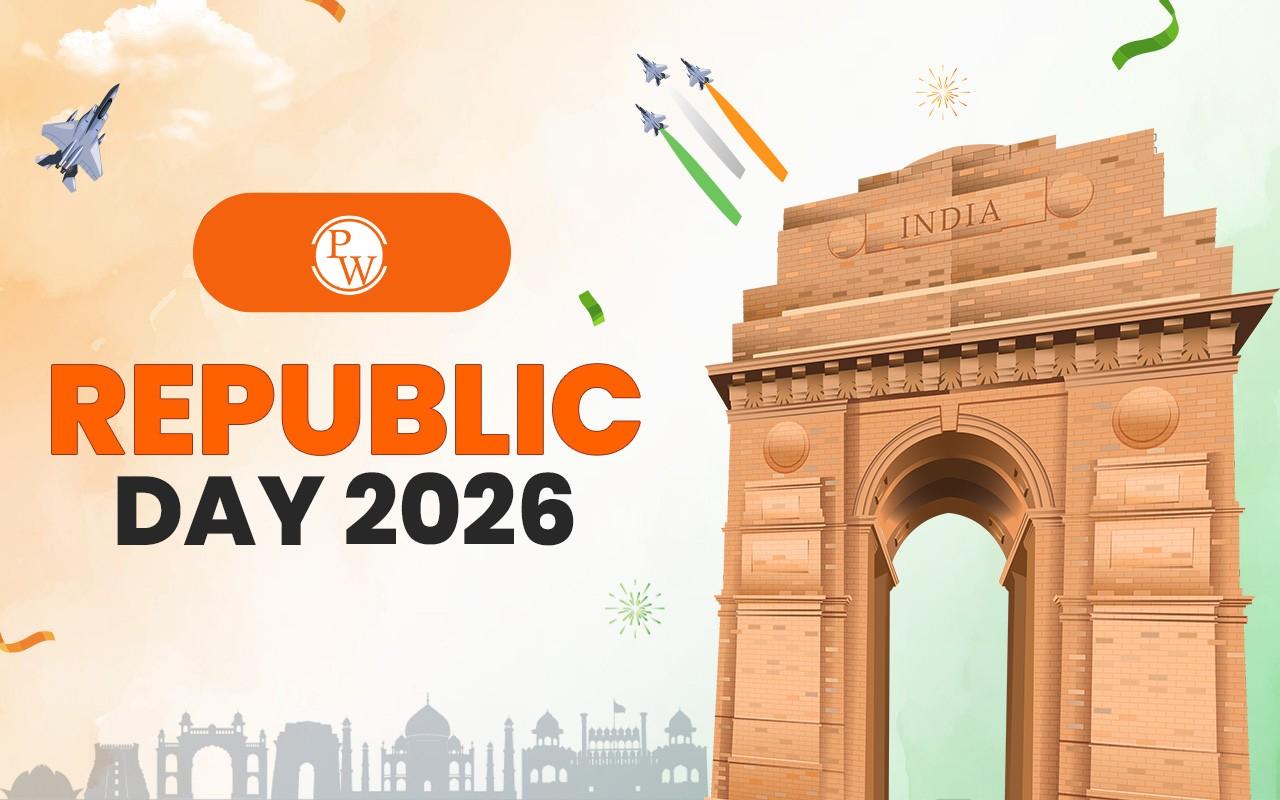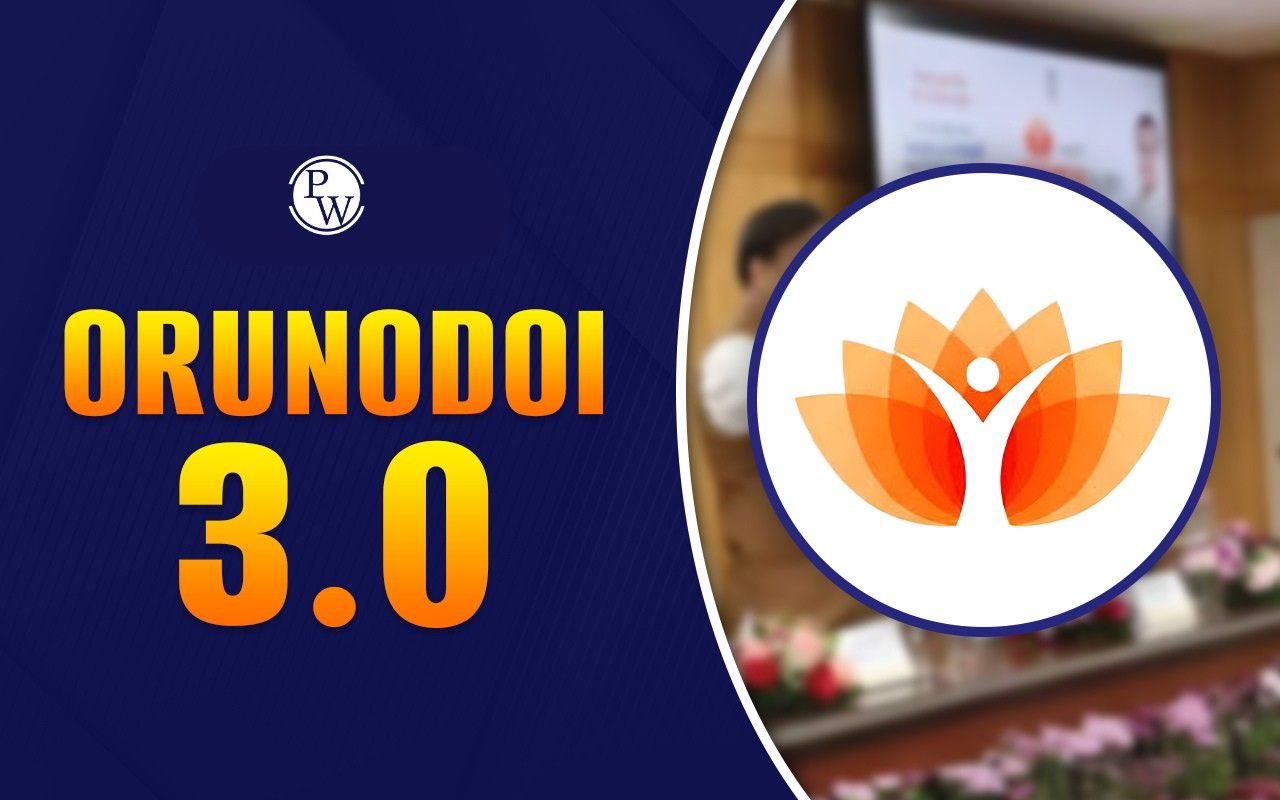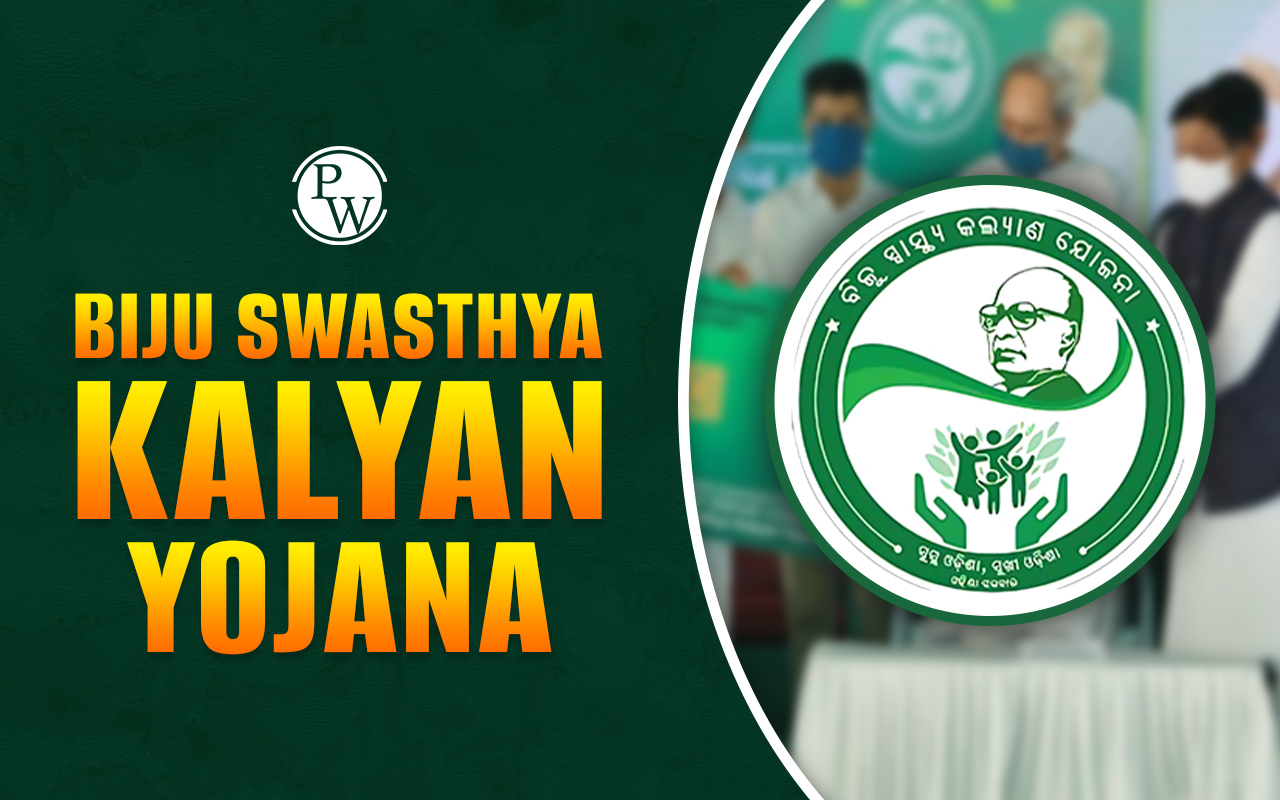
UPSC Geography Questions in Prelims: The UPSC Civil Services Exam (CSE) includes questions on geography to test candidates' understanding of the subject. Mastering this subject is essential for candidates, as questions are asked on a fixed set of topics, such as the drainage system, straits, and climatology. The format of UPSC Prelims geography questions includes MCQs, map-based questions, pair matching, etc.
While the theoretical part, such as physical geography, may seem less interesting, diagrams and mapping make it engaging. As the trends of geography questions in UPSC Prelims stay consistent, it's high time that candidates focus on this subject to fetch good marks.UPSC Prelims Geography Question Paper With Solution PDF
Geography is one of the core and static subjects in the UPSC Prelims syllabus. To tackle the Geography questions in UPSC Prelims, candidates should revise Class XI NCERTs multiple times and do regular map practice by locating the places in the news. After completing the topic, solve related questions and check the answers to evaluate the learning.| UPSC Prelims Solved PYQs | |
| Title | Link |
| Geography Questions in UPSC Prelims with Answers | UPSC Prelims Geography PYQs |
| Other Subject Questions in UPSC Prelims | UPSC Prelims PYQs |
UPSC Prelims Geography Questions 2024
Geography questions dominated the GS paper in UPSC Prelims 2024 examining candidates' knowledge of physical, economic, and human geography. Topics of UPSC Prelims Geography Questions 2024 include climate patterns, landforms, natural resources, and the distribution of flora and fauna, as well as urbanization and population dynamics. Here are Geography questions with answers that were asked in the UPSC Prelims exam:(a) Canada and the United States of America
(b) Chile and Argentina2. Consider the following statements:
- The Red Sea receives very little precipitation in any form.
- No water enters the Red Sea from rivers.
(c) Both 1 and 2
(d) Neither 1 nor 2- Statement I: The atmosphere is heated more by incoming solar radiation than by terrestrial radiation.
- Statement II: Carbon dioxide and other greenhouse gases in the atmosphere are good absorbers of long wave radiation.
(d) Statement I is incorrect, but Statement II is correct
4. Consider the following statements:(a) Both Statement-I and Statement-II are correct and Statement-II explains Statement-I
(b) Both Statement-I and Statement-II are correct, but Statement-II does not explains Statement-I5. Consider the following :
- Pyroclastic debris
- Ash and dust
- Nitrogen compounds
- Sulphur compounds
(d) All four
6. Which of the following is/are correct inference/inferences from isothermal maps in the month of January?- The isotherms deviate to the north over the ocean and to the south over the continent.
- The presence of cold ocean currents, Gulf Stream and North Atlantic Drift make the North Atlantic Ocean colder and the isotherms bend towards the north.
(a) 1 only
(b) 2 only7. Which of the following countries are well known as the two largest cocoa producers in the world?
(a) Algeria and Morocco
(b) Botswana and Namibia
(c) Cote d’Ivoire and Ghana
(d) Madagascar and Mozambique8. With reference to the Himalayan rivers joining the Ganga downstream of Prayagraj from West to East, which one of the fallowing sequences is correct?
(a) Ghaghara — Gomati — Gandak — Kosi
(b) Gomati — Ghaghara — Gandak — Kosi
(c) Ghaghara — Gomati — Kosi — Gandak9. Consider the following statements :
- Statement-I: Rainfall is one of the reasons for weathering of rocks.
- Statement-II: Rain water contains carbon dioxide in solution.
- Statement-III: Rain water contains atmospheric oxygen.
- Both Statement II and Statement III are correct and both of them explain Statement I
- Both Statement-II and Statement III are correct, but only one of them explains Statement I
- Only one of the Statements II and III is correct and that explains Statement I
- Neither Statement II nor Statement-III is correct
- Finland
- Germany
- Norway
- Russia
(b) Only two
(c) Only three11. Consider the following information:
| Waterfall | Region | River | |
| 1. | Dhunandhar | Malwa | Narmada |
| 2. | Hundru | Chota Nagpur | Subarnarekha |
| 3. | Gersoppa | Western Ghats | Netravati |
(a) Only one
(b) Only two12. Consider the following information:
| Region | Name of the mountain range | Type of mountain | |
| 1. | Central Asia | Vosges | Fold mountain |
| 2. | Europe | Alps | Block mountain |
| 3. | North America | Appalachians | Fold mountain |
| 4. | South America | Andes | Fold mountain |
(b) Only two
(c) Only three13. Consider the following:
- Cashew
- Papaya
- Red sanders
(a) Only one
(b) Only two14. With reference to “water vapour”, which of the following statements is/are correct?
- It is a gas, the amount of which decreases with altitude.
- Its percentage is maximum at the poles.
(a) 1 only
(b) 2 only15. Consider the following description:
- Annual and daily range of temperatures is low.
- Precipitation occurs throughout the year.
- Precipitation varies between 50 cm – 250 cm.
(d) Marine West Coast climate
16. With reference to “Coriolis force”, which of the following statements is/are correct?- It increases with increase in wind velocity.
- It is maximum at the poles and is absent at the equator.
(c) Both 1 and 2
(d) Neither 1 nor 217. On June 21 every year, which of the following latitude(s) experience(s) a sunlight of more than 12 hours?
- Equator
- Tropic of Cancer
- Tropic of Capricorn
- Arctic Circle
(d) 2 and 4
18. One of the following regions has the world’s largest tropical peatland, which holds about three years worth of global carbon emissions from fossil fuels; and the possible destruction of which can exert detrimental effect on the global climate. Which one of the following denotes that region?
(a) Amazon Basin(b) Congo Basin
(c) Kilkori Basin19. Consider the following plants:
- Groundnut
- Horse-gram
- Soybean
(c) All three
(d) None20. The total fertility rate in an economy is defined as:
- the number of children born per 1000 people in the population in a year.
- the number of children born to a couple in their lifetime in a given population.
- the birth rate minus death rate.
- the average number of live births a woman would have by the end of her child-bearing age.
Geography Questions in UPSC Prelims 2023
In 2023, many geography questions were asked in UPSC Prelims, ranging from the river system of India to oceanography. A good strategy is to read topics and then go through the previous year's Geography questions in UPSC Prelims. Geography questions in UPSC Prelims 2023 were as follows:- Jhelum River passes through Wular Lake.
- Krishna River directly feeds Kolleru Lake.
- Meandering of the Gandak River formed Kanwar Lake.
(a) Only one
(b) Only two
(c) All three
(d) None
| Port | Well known as |
| 1. Kamarajar Port | First major port in India registered as a company |
| 2. Mundra Port | Largest privately owned port in India |
| 3. Visakhapatnam | Largest container port in Port India |
(a) Only one pair
(b) Only two pairs
(c) All three pairs
(d) None of the pairs
Also Read - Geography Important Topics for UPSC Prelims
3) Consider the following trees:- Jackfruit (Artocarpus heterophyllus)
- Mahua (Madhuca indica)
- Teak (Tectona grandis)
(a) Only one
(b) Only two
(c) All three
(d) None
5) Which one of the following is the best example of repeated falls in sea level, giving rise to present-day extensive marshland?
(a) Bhitarkanika Mangroves
(b) Marakkanam Salt Pans
(c) Naupada Swamp
(d) Rann of Kutch
6) Ilmenite and rutile, abundantly available in certain coastal tracts of India, are rich sources of which one of the following?
(a) Aluminium
(b) Copper
(c) Iron
(d) Titanium
7) Consider the following statements:
- Amarkantak Hills are at the confluence of Vindhya and the Sahyadri Ranges.
- Biligirirangan Hills constitute the easternmost part of Satpura Range.
- Seshachalam Hills constitute the southernmost part of Western Ghats.
How many of the statements given above are correct?
(a) Only one
(b) Only two
(c) All three
(d) None
8) Consider the following statements:
- Statement I: The soil in tropical rainforests is rich in nutrients.
- Statement II: The high temperature and moisture of tropical rainforests cause dead organic matter in the soil to decompose quickly.
Which one of the following is correct in respect of the above statements?
(a) Both Statement I and Statement II are correct and Statement II is the correct explanation for Statement I
(b) Both Statement I and Statement II are correct and Statement II is not the correct explanation for Statement I
(c) Statement I is correct but Statement II is incorrect
(d) Statement I is incorrect but Statement II is correct
9) Consider the following statements:
- Statement I: The temperature contrast between continents and oceans is greater during summer than in winter.
- Statement II: The specific heat of water is more than that of land surface.
Which one of the following is correct in respect of the above statements?
(a) Both Statement I and Statement II are correct and Statement II is the correct explanation for Statement I
(b) Both Statement I and Statement II are correct and Statement II is not the correct explanation for Statement I
(c) Statement I is correct but Statement II is incorrect
(d) Statement I is incorrect but Statement II is correct
10) Consider the following statements:
- In a seismograph, P waves are recorded earlier than S waves.
- In P waves, the individual particles vibrate to and fro in the direction of wave propagation whereas in S waves, the particles vibrate up and down at right angles to the direction of wave propagation.
Which of the statements given above is/are correct?
(a) 1 only
(b) 2 only
(c) Both 1 and 2
(d) Neither 1 nor 2
11) With reference to coal-based thermal power plants in India, consider the following statements:
- None of them uses seawater.
- None of them is set up in water-stressed districts.
- None of them is privately owned.
How many of the above statements are correct?
(a) Only one
(b) Only two
(c) All three
(d) None
12) With reference to the Earth's atmosphere, which one of the following statements is correct?
(a) The total amount of insolation received at the equator is roughly about 10 times that received at the poles.
(b) Infrared rays constitute roughly two-thirds of insolation.
(c) Infrared waves are largely absorbed by water vapour that is concentrated in the lower atmosphere.
(d) Infrared waves are a part of the visible spectrum of electromagnetic waves of solar radiation.
13) Consider the following statements:
- Statement I: India, despite having uranium deposits, depends on coal for most of its electricity production.
- Statement II: Uranium, enriched to the extent of at least 60%, is required for the production of electricity.
Which one of the following is correct in respect of the above statements?
(a) Both Statement I and Statement II are correct and Statement II is the correct explanation for Statement I
(b) Both Statement I and Statement II are correct and Statement II is not the correct explanation for Statement I
(c) Statement I is correct but Statement II is incorrect
(d) Statement I is incorrect but Statement II is correct
Geography Questions in UPSC Prelims 2022
Here are the Geography questions from the UPSC Prelims 2022 General Studies Paper 1, along with their correct answers:
Q1. Consider the following statements:
1. High clouds primarily reflect solar radiation and cool the surface of the Earth.
2. Low clouds have a high absorption of infrared radiation emanating from the
Earth's surface and thus cause warming effect.
Which of the statements given above is/are correct?
(a) 1 only
(b) 2 only
(c) Both 1 and 2
(d) Neither 1 nor 2
Q2. Consider the following statements:
1. Bidibidi is a large refugee settlement in north-western Kenya.
2. Some people who fled from South Sudan civil war live in Bidibidi.
3. Some people who fled from civil war in Somalia live in Dadaab refugee complex in
Kenya.
Which of the statements given above is/are correct?
(a) 1 and 2
(b) 2 only
(c) 2 and 3
(d) 3 only
Q3. Consider the following statements:
1. Gujarat has the largest solar park in India.
2. Kerala has a fully solar powered International Airport.
3. Goa has the largest floating solar photovoltaic project in India.
Which of the statements given above is/are correct?
(a) 1 and 2
(b) 2 only
(c) 1 and 3
(d) 3 only
Q4. Which one of the following statements best reflects the issue with Senkaku Islands, sometimes mentioned in the news?
(a) It is generally believed that they are artificial islands made by a country around the South China Sea.
(b) China and Japan engage in maritime disputes over these islands in the East China Sea.
(c) A permanent American military base has been set up there to help Taiwan to increase its defense capabilities.
(d) Though the International Court of Justice declared them as no man's land, some South-East Asian countries claim them.
Q5. Consider the following pairs:
Country Region often mentioned in the news
1. Anatolia — Turkey
2. Amhara — Ethiopia
3. Cabo Delgado — Spain
4. Catalonia — Italy
How many pairs given above are correctly matched?
(a) Only one pair
(b) Only two pairs
(c) Only three pairs
(d) All four pairs
Q6. Consider the following States:
1. Andhra Pradesh
2. Kerala
3. Himachal Pradesh
4. Tripura
How many of the above are generally known as tea-producing States?
(a) Only one State
(b) Only two States
(c) Only three States
(d) All four States
Year Wise Geography Questions in UPSC Prelims
In UPSC Prelims 2023, a total of 13 questions from Geography subjects were asked. Candidates must be aware of the past 10-year trend of Geography Questions in UPSC Prelims. Notice the topics that are being repeated the most and focus on those as the exam approaches. This subject is also useful in solving environment section questions such as the natural vegetation part. Here is the year-wise trend of Geography questions in UPSC Prelims:
UPSC Geography Prelims Questions Topic-wise
Going through the topic-wise questions is useful in identifying how to approach a particular question. For example, to solve the questions on the drainage system candidates should refer to the maps of the major river systems and picture each drainage system. Here are topic-wise Geography questions in UPSC Prelims:- Andaman and Nicobar
- Nicobar and Sumatra
- Maldives and Lakshadweep
- Sumatra and Java
- Barak
- Lohit
- Subansiri
- 1 only
- 2 and 3 only
- 1 and 3 only
- 1, 2 and 3
| Cardamom Hills | Coromandel Coast |
| Kaimur Hills | Konkan Coast |
| Mahadeo Hills | Central India |
| Mikir Hills | North-East India |
- 1 and 2
- 2 and 3
- 3 and 4
- 2 and 4
- Equatorial climate
- Mediterranean climate
- Monsoon climate
- All of the above climates
- Seed cost is very low in this compared to the conventional method of cultivation.
- Drip irrigation can be practiced very effectively in this.
- There is no application of chemical/ inorganic fertilizers at all in this.
- The scope for intercropping is more in this compared to the conventional method of cultivation.
- 1 and 3 only
- 1, 2 and 4 only
- 2, 3, and 4 only
- 1, 2, 3 and 4
- They are generally red in colour.
- They are rich in nitrogen and potash.
- They are well-developed in Rajasthan and UP.
- Tapioca and cashew nuts grow well on these soils.
(a) 1, 2, and 3
(b) 2, 3, and 4
(c) 1 and 4
(d) 2 and 3 only
- They live mainly in the State of Uttarakhand.
- They rear the Pashmina goats that yield a fine wool.
- They are kept in the category of Scheduled Tribes.
- 1 only
- 2 and 3 only
- 3 only
- 1, 2 and
- The Barren Island volcano is an active volcano located in the Indian territory.
- Barren Island lies about 140 km east of Great Nicobar.
- The last time the Barren Island volcano erupted was in 1991 and it has remained inactive since then.
Geography Questions in UPSC Prelims FAQs
How many questions come from Geography in the UPSC prelims exam?
What type of questions are asked from Geography in UPSC Prelims?
How many Indian Geography questions are asked in UPSC Prelims?
How to prepare the Geography for UPSC Prelims?
Are Geography questions in UPSC Prelims more static or current affairs-based?










